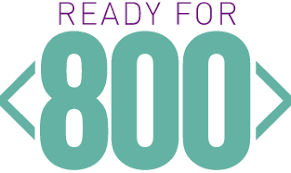It takes a variety of supplies to run your practice. And although drugs, medical supplies and animal food top the list of expenditures, they aren’t the only essential items. In fact, it’s impossible to execute vital tasks like medication dispensing and hazardous material identification without veterinary labels. They may not get the same scrutiny as the higher expenditure categories but when managed effectively there are steps you can take to impact costs and ensure effective patient care. Here are 10 facts about veterinary labels that may change your opinion about their importance.
10 Facts About Veterinary Labels
Here are 10 facts about veterinary labels that may change your opinion about their importance.
1 Veterinary practices purchase labels from a variety of different sources
Those sources include:
- Label suppliers
- Office supply companies
- Local print shops
- Printer manufacturers and service providers
2 An average practice purchases labels from three to five different suppliers
This includes both pre-printed stock labels and custom labels.
3The largest label expenditures
For most veterinary practices, labels for thermal printers, including DYMO®️and Zebra®️, and labels for laser printers represent their largest label expenditure.
4 A good way to estimate practice label spend
The amount a veterinary practice spends on labels depends upon a variety of factors including the number of DVM’s, the type of services offered and the total amount of clients. Using smart purchasing tactics including consolidating suppliers and establishing blanket orders can help reduce costs.
5 Both thermal and laser printers
Have print-ready format options that fit common office applications including:
- Prescriptions and medications
- Mailing and shipping
- Files and binders
- Badges
- Barcoding
Using a label that matches each format saves staff time, reduces label waste and saves money.
6 Label adhesives impact practice performance
Adhesive selection can have a profound impact on client safety and staff productivity. The wrong adhesive can cause labels to fall off of vials, IV lines, medication dispensing devices and more, which can create extra work for the clinical staff and put patients at risk.
7 Make sure you get the right adhesive
Labels obtained from office supply companies usually don’t contain the adhesives required for specialty applications needed by the lab and pharmacy. For example, a simple permanent adhesive label works perfectly when the end-use application is an envelope or file folder label. But, when it’s a label used on a syringe that requires refrigeration, that same adhesive is likely to fall off.
8The label ordering process
The label ordering process varies widely from practice to practice. Most organizations order labels on an as-needed basis through online ecommerce sites or by contacting a supplier's customer service operation. Only a small percentage of practices leverage buying groups such as VMG and PSMA for discounts on label purchases.
9Hidden label costs
There are significant hidden costs associated with using labels. Although the unit cost for most labels is minimal, if it doesn’t function properly, the actual expense goes up exponentially. For example, consider a label that doesn’t adhere properly to a medication prepared in the pharmacy. It forces a pharmacy or vet tech to reconfirm or refill the medication and then reprint and apply the label. The extra time required from an expensive resource can push the actual label cost from pennies to tens of dollars apiece, and higher, if medications need replacing.
10Avoid OSHA fines
Failing to meet OSHA labeling requirements is another potential cost driver. In 2012, OSHA enacted the globally harmonized system (GHS) in an effort to prevent avoidable injuries and illness. This requires identification and labeling of hazardous chemicals. In fact, poor or no chemical labeling is a common violation that can result in fines of more than $10,000.
11 USP 800 labeling requirements
In addition to OSHA prerequisites, the United States Pharmacopeial Convention (USP) developed requirements for hazardous drugs with intent to limit exposure to healthcare workers, patients and staff. USP 800 requires veterinary practices to identify, inventory and label hazardous drugs. These guidelines went into effect December 1, 2019.
United Ad Label
UAL’s complete stock and custom label product offering, combined with an in-depth knowledge of hospital processes, procedures and protocols, allow us to standardize items, reduce SKUs, and minimize costs while enhancing error prevention and improving clinical outcomes. Contact us to learn more about our services.

